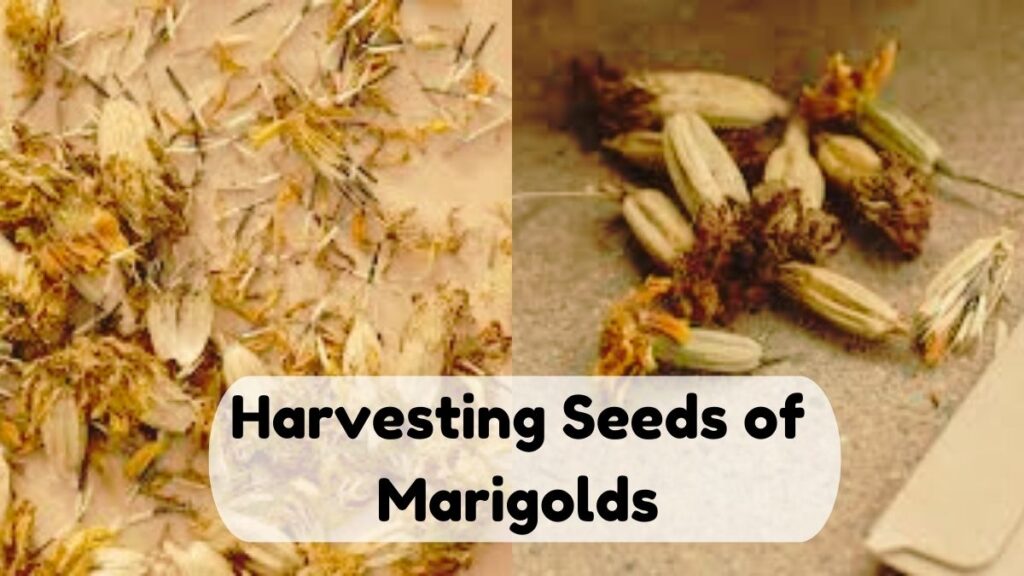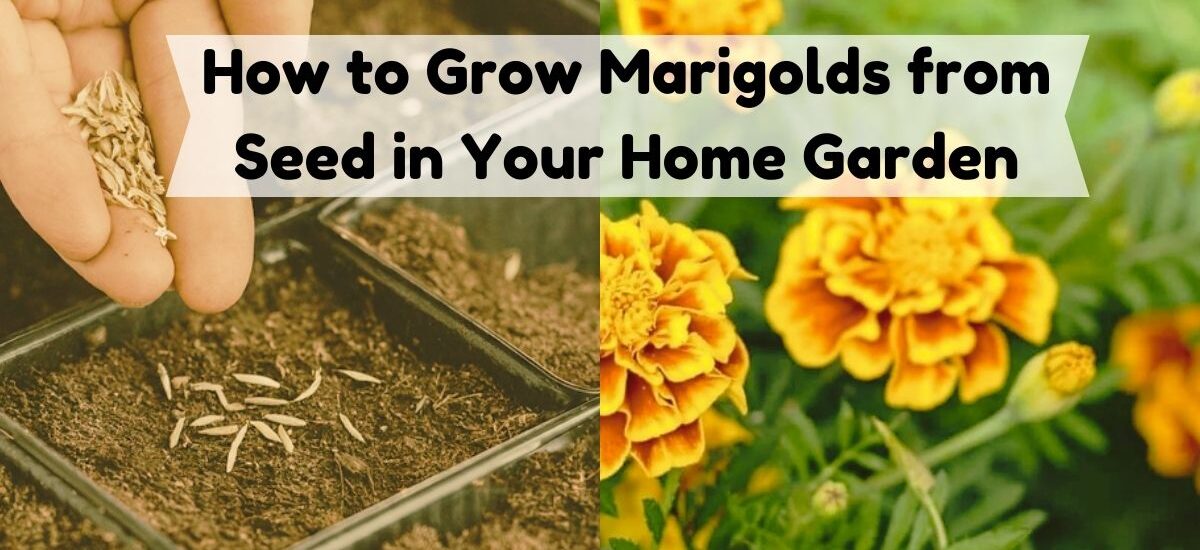Marigolds are a preferred among home gardeners worldwide, known for their vibrant blooms and easy-growing nature. Every year, I plant marigolds in both my garden and patio containers, as they grown in a variety of conditions. While many gardeners prefer buying marigold plants from the store and transplanting them, growing your own from seed can be a cost-effective alternative. By harvesting seeds from your marigolds, you can save money and enjoy the satisfaction of cultivating them yourself.
Choosing the Right Marigold Seeds
There are different types of marigolds, such as French marigolds, African marigolds, and signet marigolds. Choose a variety that suits your garden space and preferences. French marigolds are compact and great for smaller gardens, while African marigolds grow taller and are perfect for larger areas. Always buy seeds from a trusted source for better germination rates.
French marigolds
French marigolds are compact, vibrant flowers that bloom in shades of yellow, orange, and red. They are perfect for small garden spaces or containers, thriving in sunny spots with well-drained soil. Known for their pest-repelling qualities, French marigolds are easy to grow and maintain, making them a popular choice for home gardeners.
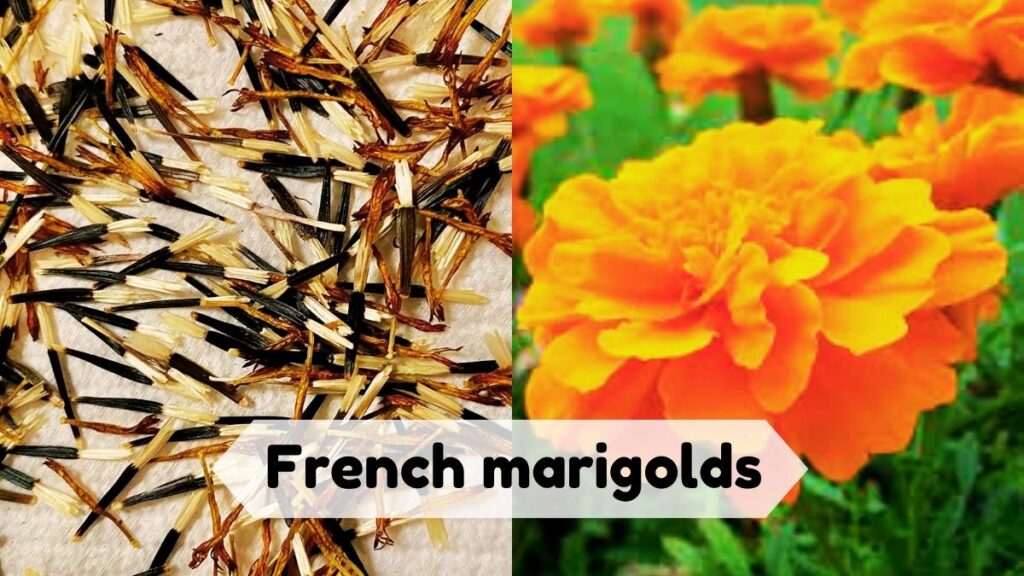
African marigolds
African marigolds are large, bold flowers that bloom in bright shades of yellow and orange. They grow taller than other marigold varieties, making them ideal for garden borders or large beds. African marigolds are sun-loving and drought-tolerant, adding vibrant color and height to any garden space.
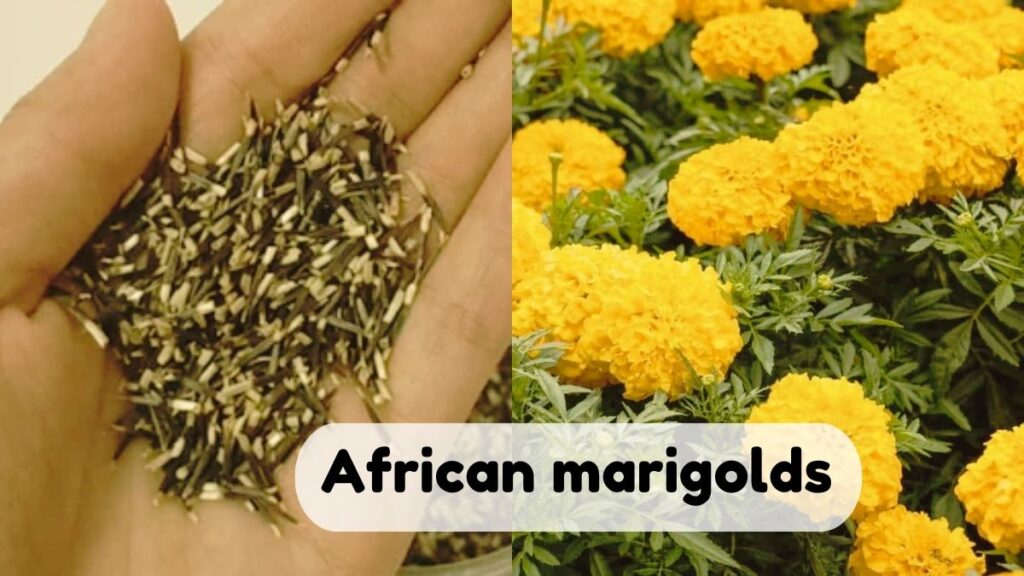
Signet marigolds
Signet marigolds are small, delicate flowers with finely divided leaves and bright yellow or orange blooms. Known for their citrusy scent and edible petals, they are often used in salads or as garnish. These hardy, drought-tolerant marigolds thrive in full sun and are great for adding a splash of color to containers or garden borders.
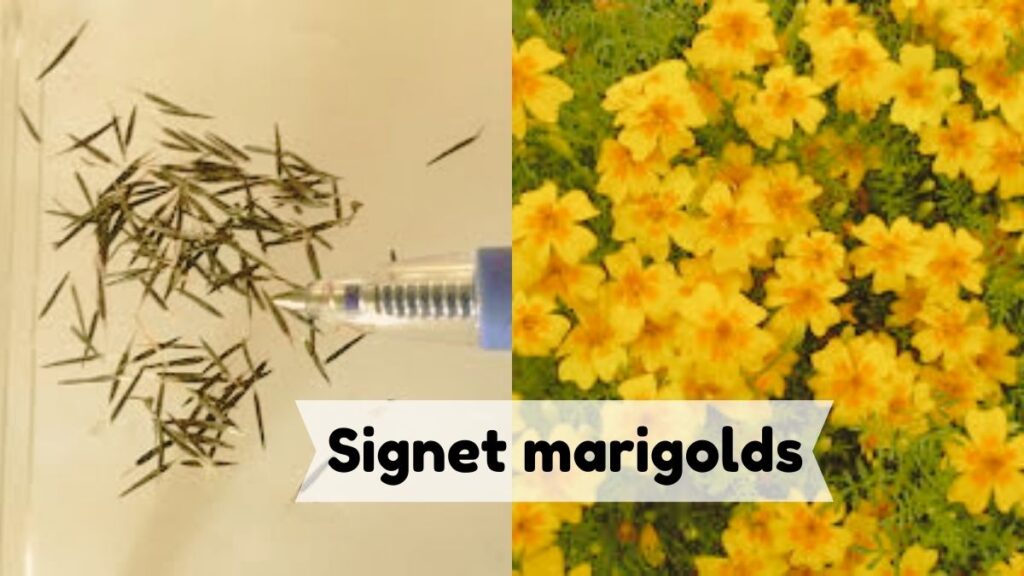
Preparation of Soil for Marigolds
Marigolds grow best in well-drained soil. If you are planting in home garden or pots, use a good-quality potting mix. For garden beds, loosen the soil and mix in compost to provide nutrients. The soil should be light and slightly moist but not waterlogged. Ensure the spot gets plenty of sunlight, as marigolds thrive in sunny areas.
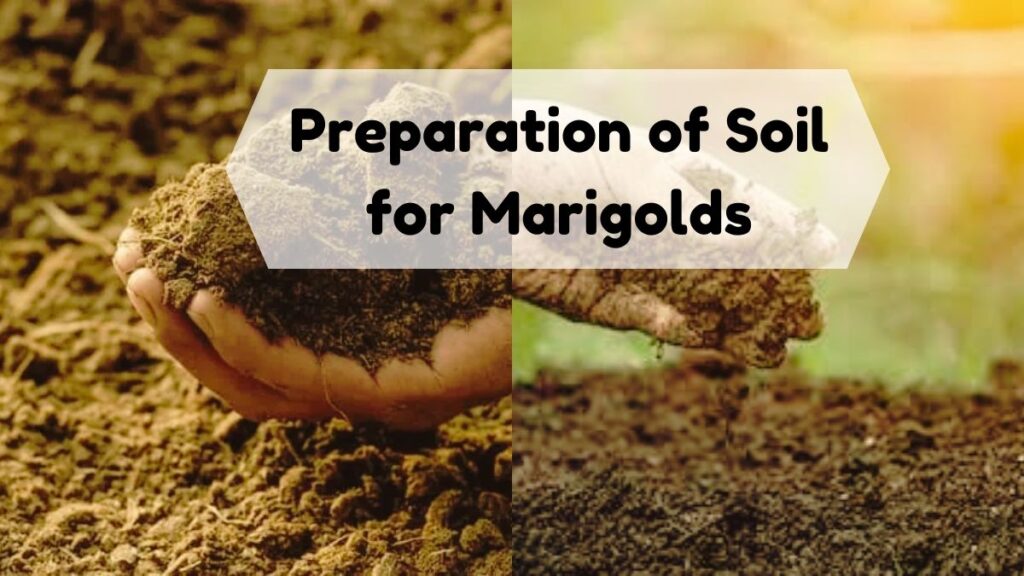
Sowing the Seeds of Marigolds
Sow marigold seeds directly into the soil after the last frost, or start them indoors 6-8 weeks before the frost ends. To sow, scatter the seeds lightly on the soil surface and cover them with about a quarter-inch of soil. Place 2-3 seeds in each spot to ensure at least one will germinate. Water the soil gently after planting.
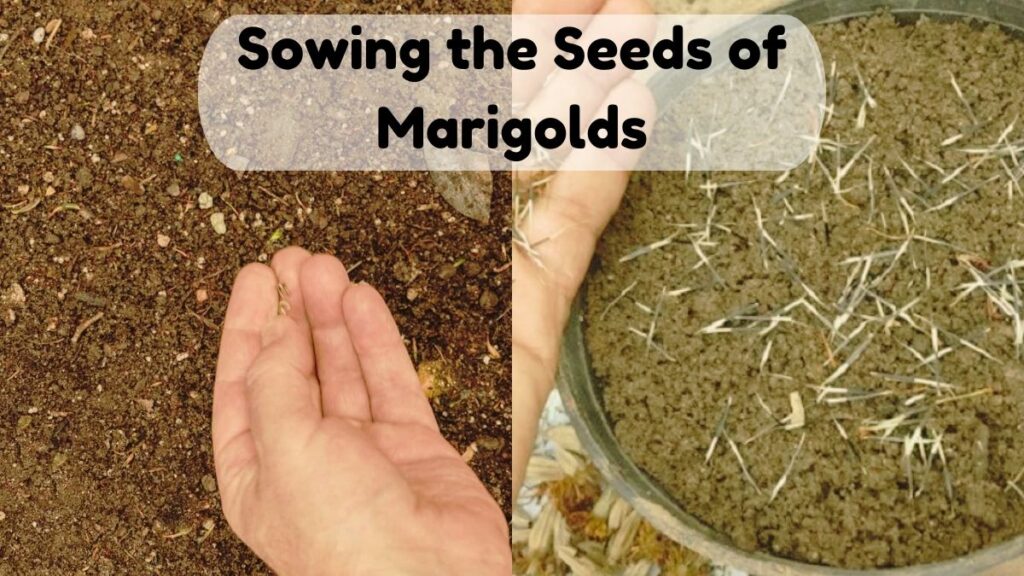
Watering the Seeds of Marigolds
Keep the soil moist, but avoid overwatering. It’s important to water regularly, especially in hot weather, but too much water can cause the seeds to rot. A spray bottle or watering can is great for keeping the soil damp without washing away the seeds. If planting indoors, cover the tray with plastic wrap to help retain moisture.
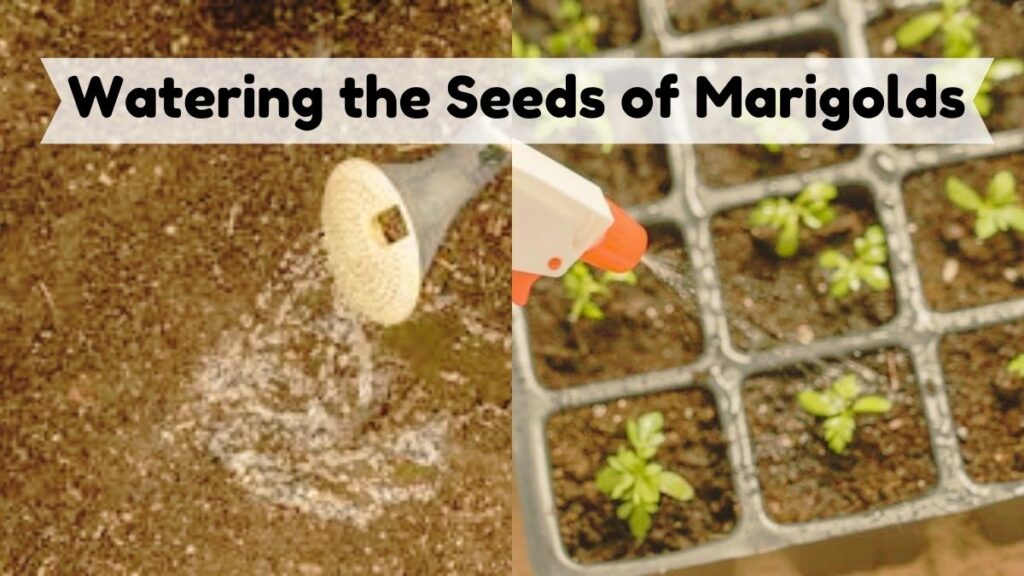
Ensuring Proper Sunlight for Marigolds
Marigolds need full sunlight to grow well. Make sure your planting area gets at least 6 hours of sunlight per day. If you are starting the seeds indoors, place them near a sunny window, preferably south-facing. Once the seedlings appear, rotate the tray regularly to make sure they grow evenly towards the light.

Transplanting the Seedlings of Marigolds
If you started your seeds indoors, transplant the seedlings into your garden or larger pots once they have 2-3 sets of leaves. Gently remove them from their tray, being careful not to damage the roots. Plant them about 8-12 inches apart to give them enough room to grow. Water the seedlings after transplanting.
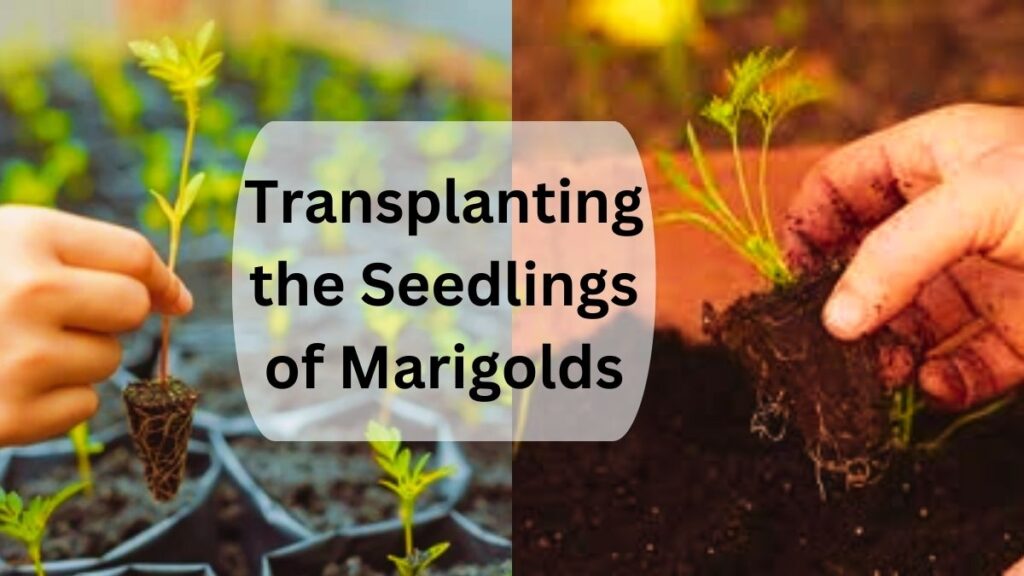
Caring of Marigolds
Marigolds are low-maintenance flowers. Water them regularly, especially during dry periods, but let the soil dry between watering sessions to prevent root rot. You don’t need to fertilize them too often; adding compost to the soil when planting usually provides enough nutrients. Marigolds are also known for repelling pests, making them a great companion plant.

Deadheading and Pruning of Marigolds
To encourage more blooms, remove wilted flowers regularly, a process called “deadheading.” This helps the plant focus its energy on producing new flowers. If the plant becomes too bushy, you can trim back some branches to keep it tidy and promote better air circulation.
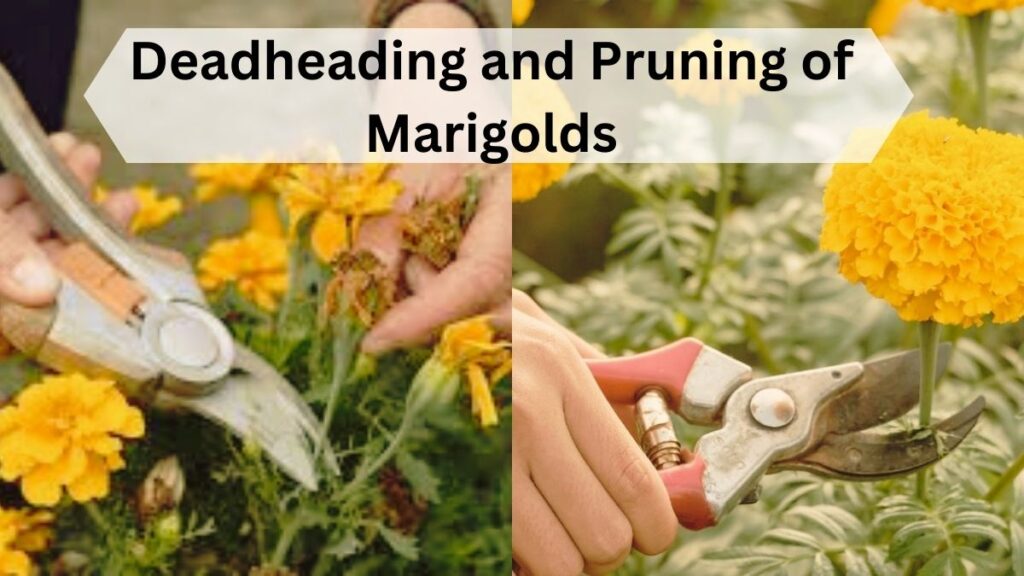
Harvesting Seeds of Marigolds
Once the marigold flowers dry and turn brown, you can collect the seeds for next year. Gently remove the dried flower heads, open them up, and shake out the seeds. Store them in a cool, dry place until you’re ready to plant again.
